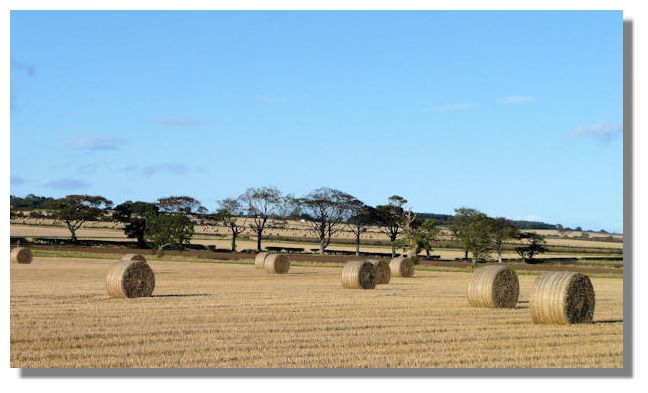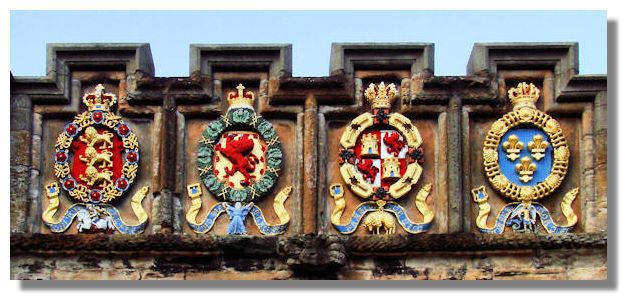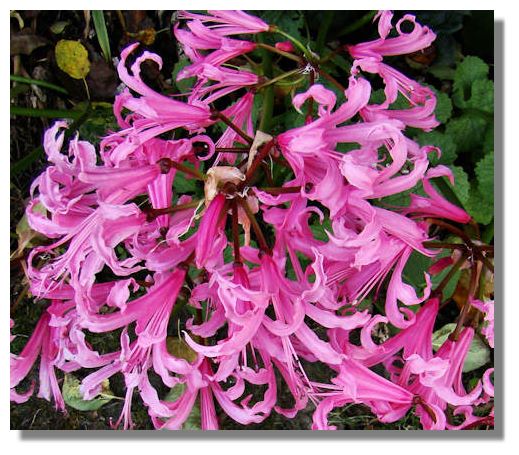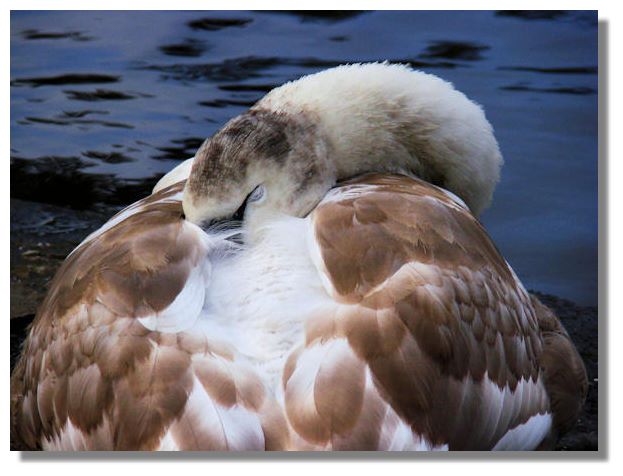The Rampant Scotland Newsletter includes a number of photographs which illustrate the weather and the seasons, plus the flora and fauna of the current week around Scotland. This separate "colour supplement" displays some more pictures, in a larger format. Here is this week's crop of Scottish views!
After so much rain in August and September, farmers struggled to harvest the cereal crops. Eventually, somehow, they have managed to complete the task and the round bales of the stalks dot the landscape in Fife. In the old days, there would have been long lines of ten or twelve sheaves propping each other up in "stooks" - great for kids to crawl through!
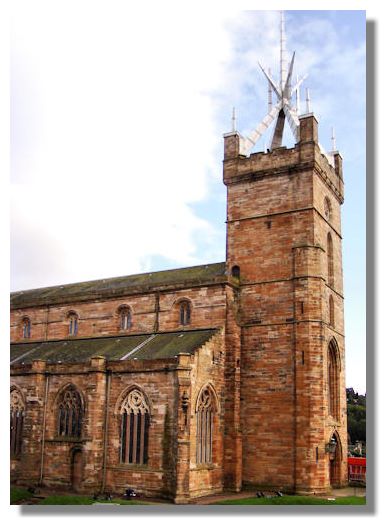
St. Michael's Parish Church in Linlithgow is one of the largest burgh churches in the Church of Scotland. St Michael is the town's patron saint and the town's motto is "St Michael is kind to strangers". King David I of Scotland granted a charter for the establishment of the church in 1138. Most of the present building dates from the mid-15th century, with extensive restorations in the 19th century. Being adjacent to Linlithgow Palace, the church was much favoured as a place of worship by Scottish Kings and Queens. Mary Queen of Scots was born in Linlithgow Palace on 8th December 1542 and was baptised in St Michaelís Church. In 1964, an aluminium crown was controversially installed, evocative of Christ's crown of thorns.
Linlithgow is only 16 miles west of Edinburgh and halfway to Stirling Castle. It has had a long association with royalty - King David I founded the burgh and a royal manor house existed there in the 12th century. King James I, who had just returned from exile in England 1424, began the palace that we see today. Succeeding monarchs added their own embellishments, particularly King James IV. His son, King James V, was born in Linlithgow Palace and later in his life he also did much to improve the royal residence, in part to impress foreign royalty. When he married the French Mary of Guise-Lorraine in 1537, she is reported to have compared Linlithgow Palace to the noblest châteaux of France.
King James V belonged to four orders of chivalry and their crests now adorn the entrance to Linlithgow Palace - from the left are the Garter of England, the Thistle of Scotland, the Golden Fleece of Burgundy and St Michael of France.
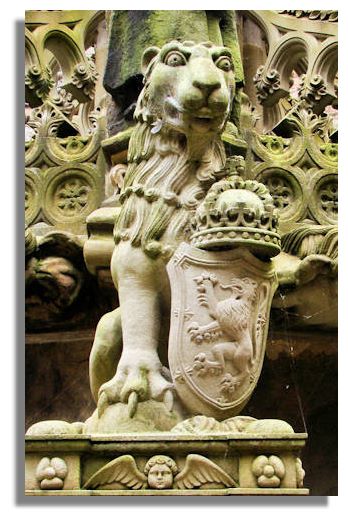
It was King James V who was responsible for the magnificent fountain in the courtyard at Linlithgow Palace. It is now Britain's oldest surviving fountain and was commissioned in the late 1530s. Designed to resemble a crown, with a large number of symbolic figures ranged around it, the "King's Fountain" was created to impress visiting monarchs and dignitaries with the opulence of King James' court. Over the centuries the fountain deteriorated - the ravages of the open air and flowing water (and red wine when Bonnie Prince Charlie called in 1745. Historic Scotland undertook a major renovation between 2002 and 2005. As much of the original stonework as possible was retained and new high-quality stone carvings were made to replace those which were no longer viable. The result is a bit of a patchwork of old and new at the moment, but in time the new stone is mellowing. There is a picture of the entire fountain in the Colour Supplement of 7 October 2006.
The pink trumpets of Nerine create a bright splash of colour in the late autumn in Scotland. These bulbous perennials originate from South Africa, but "Nerine bowdenii" are hardy enough for the Scottish climate. The wavy petals of the trumpets come in clusters, on graceful stems, with individual flowers about 1½" (4 centimetres) across. The blooms are long lasting and the leaves - which follow on afterwards - don't die down until the spring.
The little bundles of fluffy cygnets that were hatched only a few months ago have grown fast, feeding on just aquatic plants and other vegetation. They are now almost as large as their parents (swans are one of our largest birds) and the initial brown feathers are beginning to give way to the white of adult swans. This cygnet was photographed last Saturday, having a snooze beside the appropriately named "Swan Pond" at Culzean Castle Country Park in Ayrshire.If you want to look back at earlier editions of this Colour Supplement, there is an Index Page
